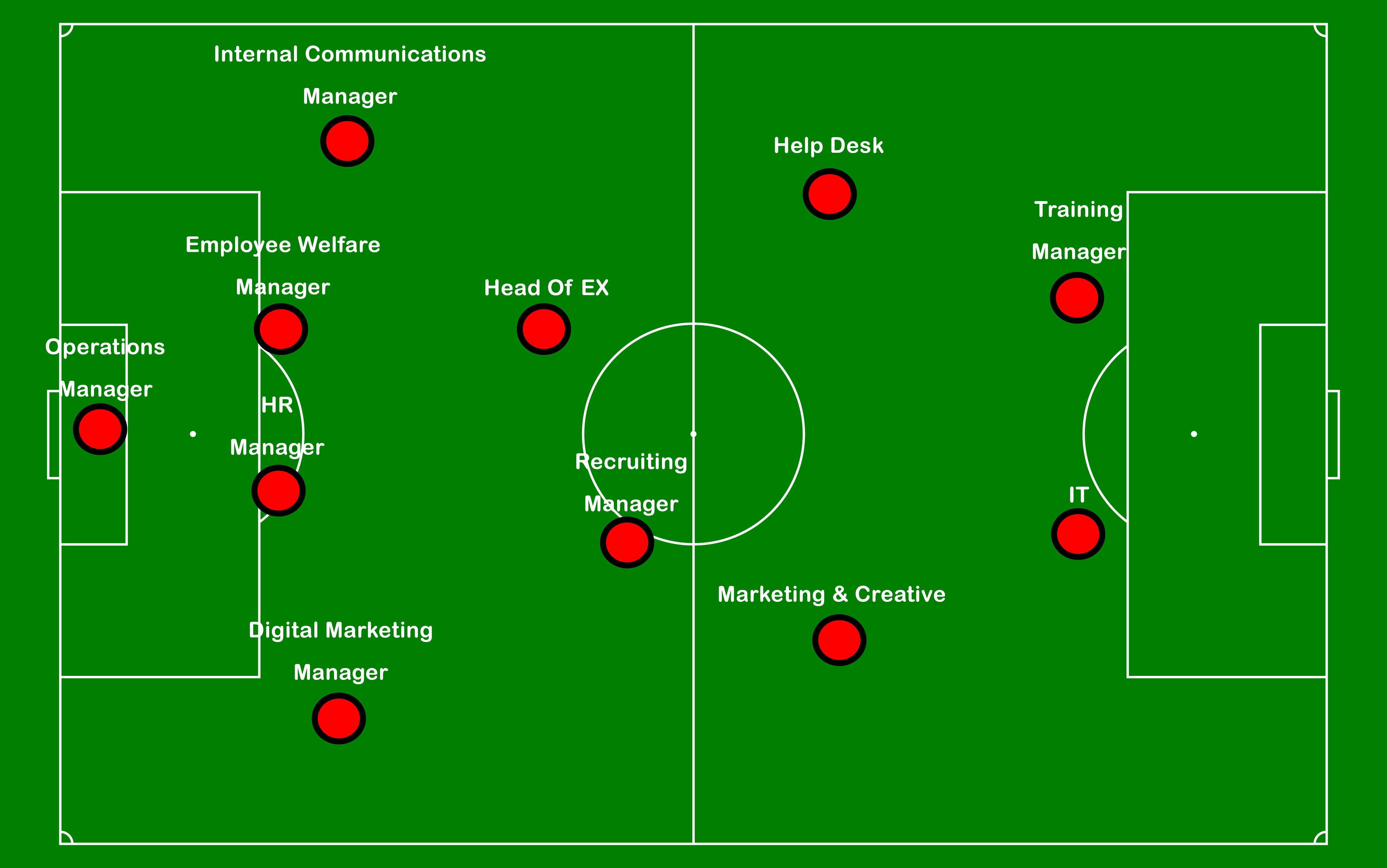Whether your company offers a product or a service, chances are that user (or service) experience is something that you (or someone else at your company—maybe even a whole team) are thinking about on a daily, maybe even hourly, basis. You’re probably well aware that user experience is not something that can be accomplished in one day—certainly not if you want your users to come back and sing your praises. Rather, it’s an ongoing process that requires conscious involvement of several different parties.
Guess what? The same is true for your employees.
Just like with UX, employee engagement or employee experience (EX, if you will) isn’t “one and done.” If it’s not constantly considered, prioritized and modified, with new benefits and rewards incorporated, it can’t happen effectively. As with UX, EX also requires careful consideration of interfaces—that is, what are the touch points through which the employee encounters the company? All the different departments with which he/she interacts, such as HR, marketing, sales, operations, IT and more, may be considered interfaces. They offer a chance to explore questions like: How can we improve the employee experience we provide? How can we make our processes streamlined and more intuitive? How can we make a mark on our employees and encourage them to make a mark on the company in turn?
And just like with customers and/or users, the ultimate goal for your employees should be to create an environment that keeps them coming back (and not just because they have a contract that requires it!) and gives them a reason to be ambassadors for the company. Your employees need to become one of your top priorities—maybe even the top priority.
So how is an effective employee experience crafted?
The truth is that we spend most of our waking hours at our workplaces, with many people spending far more hours at work than they are even expected to, as well as connecting and interacting even when they’re not physically in the office. As a result, the employee experience needs to be questioned and challenged in order to undergo strategic improvement, just like the customer/service experience. In addition, it must be inspired by and imbued with company values, to ensure alignment across the whole organization.
Who are the key players?
The old-school approach views employee engagement and needs as strictly the domain of the HR department. However, given the many touch points of interaction between employees and the company, to be truly impactful, employee experience must involve many different departments. To illustrate this, Airbnb, for example, did away with its “Global Human Resources Officer” title, opting instead for “Chief Employee Experience Officer.” But the buck doesn’t stop there—even if your company doesn’t put a CEEO or VP Employee Experience into place.
In other words, employee experience is a team sport.
Successful employee experience involves the participation of many other members of your team, largely representing two areas of focus: strategy and day-to-day operations.
The strategy arm of EX relies heavily on the following people:

Internal Communications Manager:
If a tree falls in the forest and no one is around to hear it, does it make a sound? The same is true for employee experience. Strategizing about it is important, but if it’s not communicated with the stakeholders, then—duh—no one will know about it. Employees get tens, maybe hundreds, of emails a day, but most of them are transactional and task related, rather than communicative of benefits and perks to which they’re entitled. If you have special benefits to offer, the first step is to get the internal communication manager involved and sprinkle some joy into your employees’ inboxes and other channels of communication. (Need tips on how to do this? Check out this article.)
Digital Marketing Manager:
Your digital marketing person is hard at work spreading the word about what your company is doing and seeing which channels get the most traction, but do the rest of your employees know that? The key to employee engagement lies in feeling like part of something bigger, and the best way to do that is to make employees feel connected to the greater cause or product they’re working on.
Marketing & Creative Team:
Don’t let your talent go to waste. Your marketing and creative people are well versed in turning company values into messaging and visuals that speak to your community. Why not challenge them to put their creativity to work on internal campaigns that have a direct impact on them and their work environment?
Operations Manager:
Employee engagement strategies must be part of the overall company workflow; otherwise they’ll remain completely aspirational. In other words, you can’t simply add another set of workflows and company processes to those that already exist and expect them to be adopted easily and seamlessly. Engagement efforts must fit into or complement existing operations and structures, so that they add value and not just more work, and they must be tied to real, meaningful rewards that give employees something to look forward to.
To ensure that the strategy surrounding employee experience and engagement is implemented on a day-to-day basis and not simply philosophized about, the following people must be involved:
HR Manager:
As the person responsible for human resources, your HR manager has unmatched access to a wealth of information. From early interviews to onboarding as well as once someone is already part of the team, this person has the ability to ask questions and gain key insights into employees’ expectations and needs for a positive experience. These gleanings can translate into better digital platforms for employee engagement and processes.
Employee Welfare Manager:
This person’s focus is—to state the obvious—employees’ welfare. But as the employee experience becomes part of the agenda, this requires thinking more holistically and strategically. Some questions that are worth considering are, for example: Are we simply creating more noise for our employees by bombarding them with emails? Can we use a digital platform that fits into our employees’ lives in a more user-friendly way instead of simply causing dread (as email does)?
Recruiting Manager:
Your employees aren’t just employees; they’re also your best ambassadors—and their voice and message is significantly stronger when it comes from the heart. When it comes to employee experience, your recruiting manager has two key roles: to encourage happy employees to spread the word (and reward them for doing so) and to bring in people who will continue to promote it.
Training Manager:
Training, and how you do it, can have a tremendous impact on the employee experience you offer. The days of long frontal lectures are over. Research has shown, over and over, that engagement relies on giving employees 360 degrees of professional development and learning opportunities. In the current age of distraction, this is best done through quick, stimulating games and competitions, mini-courses they can watch digitally during breaks or their commute and, of course, rewards for their participation, such that they understand that their workplace values and encourages nonstop learning.
—
The benefits of a positive employee experience can’t be quantified; its impact reaches far and wide in everything your company does. As a result, it requires an “all hands on deck” approach across your organization and must be designed in a way that everyone is eager to be a part of.


Leave a Reply